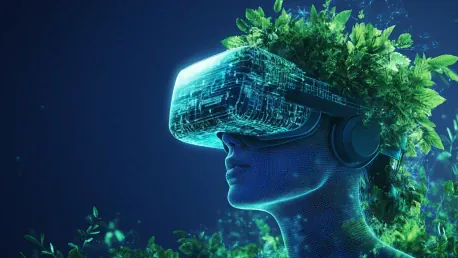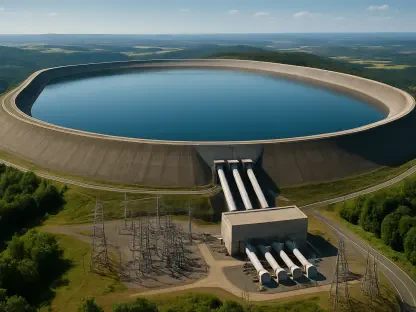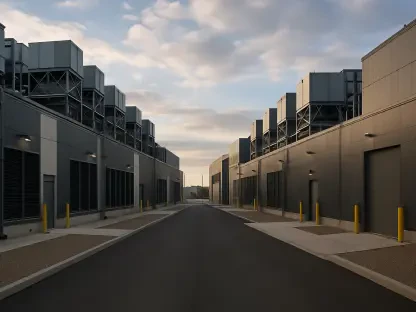Arizona State University (ASU) has successfully elevated the public’s understanding and acceptance of advanced water purification (AWP) technologies through an innovative virtual reality (VR) project. Spearheaded by an interdisciplinary team, the initiative aims to provide an immersive educational experience that showcases the cutting-edge methods used in water recycling. Recently, the project earned the prestigious WateReuse Award for Excellence in Outreach and Education, recognizing its significant achievements in enhancing public awareness.
Award-Winning VR Project
The VR project, led by Professor Claire Lauer, introduces two distinct immersive experiences: one that is headset-based and another that is web-based. These experiences afford Arizona residents a unique opportunity to explore AWP plants from the comfort of their homes. The state-of-the-art water recycling methods recently approved for implementation at the state level are explained in great detail, allowing users to virtually witness the intricate process. Such initiatives prove vital, as a considerable portion of the public remains unaware of the sophisticated technologies employed in AWP and the substantial benefits they present.
Through the VR project, viewers are virtually transported inside an AWP industrial plant, providing a comprehensive view of the water transformation process. Participants can observe how wastewater from homes and other buildings undergoes multiple stages of purification, ultimately converting into high-quality drinking water. The multiple-barrier treatment approach is highlighted, demonstrating its effectiveness in eradicating impurities, pathogens, and harmful chemicals, thereby emphasizing the safety and reliability of the water produced.
Project Leadership and Collaboration
Professor Claire Lauer, an expert in technical communication and co-director of the user experience master’s program at ASU College of Integrative Sciences and Arts, accepted the award on March 17 at the 40th Annual WateReuse Symposium in Tampa Bay, Florida. The Arizona Water Innovation Initiative, which drives the project, represents a comprehensive research and development effort orchestrated by ASU’s Julie Ann Wrigley Global Futures Laboratory in collaboration with the Ira A. Fulton Schools of Engineering. This statewide initiative engages various stakeholders, including industrial, municipal, agricultural, tribal, and international bodies, to accelerate the adoption of innovative water resilience technologies and strategies.
Active collaboration with a range of partners forms the core of the Arizona Water Innovation Initiative. Integral participants come from diverse sectors, including Scottsdale Water, ASU’s Meteor Studio, Ask A Biologist, and local high schools. By involving such a wide array of stakeholders, the initiative ensures that the VR project accurately reflects genuine water concerns and remains accessible to all audiences. This broad collaboration not only fosters a deeper understanding of the AWP technologies but also strengthens community bonds.
Enhancing Public Understanding
The VR project’s primary objective is to provide an engaging platform for Arizona residents to grasp the intricacies of advanced water purification and its safety for consumption. This effort is particularly crucial given that many people remain uninformed about these new processes and their advantages. By simplifying technical explanations through an immersive VR format, the project effectively communicates the steps involved in purifying water. Users can explore the plant’s interior and witness the transformation as wastewater is processed through various stages, leading to the production of pure drinking water.
The multiple-barrier treatment approach, a cornerstone of AWP, ensures contaminants, pathogens, and hazardous chemicals are thoroughly removed. By offering a virtual tour, the project eliminates the need for physical safety gear while providing a detailed view of the plant’s operations. This guided experience draws attention to the differences between AWP and traditional purification methods that rely on natural buffers like rivers and lakes. In controlled environments, AWP consistently yields exceptionally clean water, further underscoring the technology’s reliability.
Technical and Multimedia Aspects
The VR experience incorporates various multimedia elements to demystify the complex AWP process. By leveraging proven technologies like ultraviolet light, reverse osmosis, ozone, biologically active carbon filtration, advanced oxidation, and chlorine disinfection, the project simplifies the technical aspects, making them accessible to a broad audience. This comprehensive approach ensures that participants can easily grasp the sophisticated techniques used in modern water purification.
The inclusion of talking animated characters, music, sound effects, voiceover narration, maps, popup videos, and graphical animations further enriches the VR experience. These engaging elements help illustrate how AWP water often surpasses traditional quality standards while offering a reliable solution for regions facing water shortages. Additionally, the project highlights how purified water from AWP plants not only meets safety requirements but also improves taste, making it an appealing alternative for communities grappling with water scarcity.
Addressing Skepticism and Confidence Building
The Arizona Water Innovation Initiative’s VR project strives to build public confidence in the cleanliness and safety of water produced from AWP plants. By addressing skepticism and misinformation surrounding recycled wastewater, the project serves as an educational tool that dispels common myths and misconceptions. Simplifying complex scientific explanations through visualizations allows the initiative to effectively convey accurate information about the AWP process.
By doing so, the project reassures the public about the reliability and safety of recycled water, fostering greater acceptance of AWP technologies. Understanding that visual learning can considerably enhance comprehension, the initiative takes advantage of VR to break down intricate processes into easily digestible segments. This effort not only educates but also empowers communities to make informed decisions about their water resources.
Community Engagement
The creative process behind the VR project was deeply rooted in community engagement. Beginning with an Arizona Water Survey and interviews with residents, the design team gathered genuine water concerns and feedback to shape an experience that resonated with all audiences. This community-centric approach ensured that the VR project was not just informative but also relevant and accessible to everyone.
Partnerships with local organizations and educational institutions, such as Scottsdale Water, ASU’s Meteor Studio, Ask A Biologist, and high schools, played a crucial role in developing the VR experience. These collaborations ensured that the content was tailored to non-technical audiences, including youth. This inclusive approach aligns with ASU’s charter to serve every Arizona community, particularly in addressing urgent water issues like drought and climate change.
Broader Impact and Recognition
Arizona State University (ASU) has made significant strides in advancing the public’s understanding and acceptance of advanced water purification (AWP) technologies through an innovative virtual reality (VR) project. Leading this initiative is an interdisciplinary team dedicated to creating an immersive educational experience. This VR project showcases the state-of-the-art methods employed in water recycling, making complex scientific concepts accessible to a broad audience. The project’s success has not gone unnoticed; it was recently honored with the prestigious WateReuse Award for Excellence in Outreach and Education. This accolade highlights the project’s significant achievements in raising public awareness and understanding of AWP technologies. By blending cutting-edge tech with educational outreach, ASU continues to be a trailblazer in environmental education and public engagement, setting a remarkable example for institutions nationwide.









